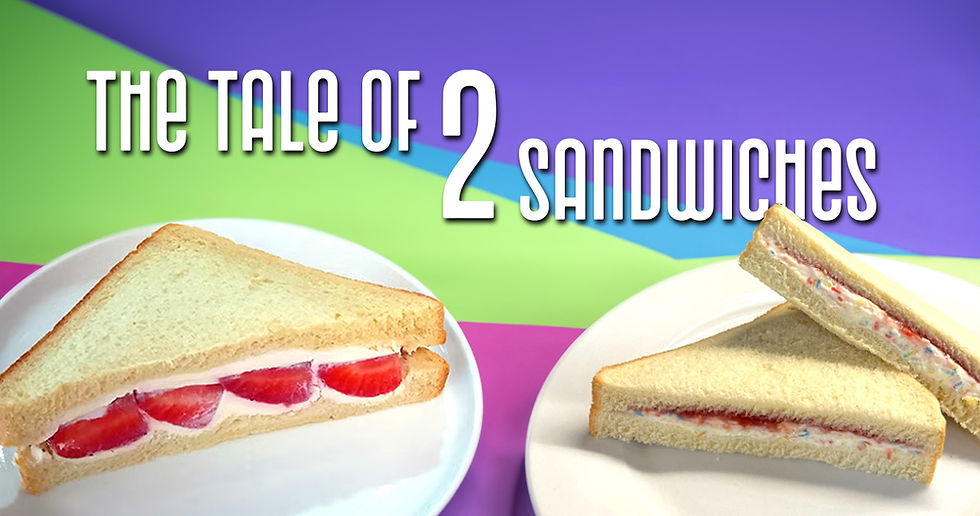The Big Freeze: How Frozen Food Shed Its Budget Image and Became Seriously Cool
- Rhys Bennett
- May 13
- 3 min read

Once upon a time, the frozen food aisle held a certain reputation. A land of last resorts, a place where budget-conscious shoppers sought out economical sustenance. But the ice is melting on that perception, and a new era is dawning for frozen fare. Experts across the food and drink spectrum are buzzing about the category's remarkable resurgence, fuelled by innovation and a surprising shift in consumer demand.
The numbers speak volumes. This once-humble sector saw a staggering growth of nearly 12% in the recent year, raking in over £8 billion in grocery sales. This isn't just about saving pennies anymore; it's about savvy shoppers recognising quality and convenience, all neatly preserved in a frosty embrace.
Consider the evolution of packaging alone. We're seeing a clear move towards more premium presentations, mirroring the quality shift within the products themselves. Think less of the utilitarian plastic and more of cleverly designed cardboard sleeves and transparent containers that proudly showcase the deliciousness within. This allows consumers to see exactly what they're investing in, building trust and shattering that old "mystery meat" image.
This transformation has been driven, in no small part, by a wave of exciting innovation. Brands are injecting creativity and flavour into frozen aisles, making them destinations for genuinely appealing meals and ingredients. This isn't just about peas and fish fingers anymore. We're seeing gourmet pizzas with distinct packaging that rivals their chilled counterparts, and vibrant ranges of frozen vegetables and meal components that champion flavour and minimise food waste.
For example, Strong Roots has significantly elevated the perception of frozen vegetables. They offer flavour-forward and often globally-inspired ready-to-cook options, presented in vibrant, modern packaging that stands out in the freezer aisle. Their focus on exciting flavour combinations and convenient formats has attracted a new generation of consumers to frozen vegetables.
Similarly, COOK, a UK company, has built its reputation on producing high-quality frozen ready meals. They emphasize using the same ingredients and techniques a home cook would, offering a wide range of dishes catering to various dietary needs. Their commitment to taste and convenience without compromising on quality has resonated with consumers seeking a hassle-free yet delicious meal solution.
Fry's Family Food, while with roots outside the UK, has established a strong presence in the UK frozen vegetarian and vegan market. They offer a diverse array of meat-free alternatives in convenient frozen formats, catering directly to the growing demand for plant-based options without sacrificing ease of preparation.
Even established players like Birds Eye are continually innovating within the frozen category. They are expanding their ranges with new formats and flavour profiles, moving beyond traditional staples and increasingly focusing on sustainable sourcing and clear nutritional benefits to appeal to a broader consumer base.
Finally, the growth of brands offering restaurant-quality frozen ready meals, often found under supermarket premium own-labels, showcases another facet of this innovation. These offerings demonstrate a commitment to flavour complexity and convenience, providing consumers with high-quality meal solutions without the associated food waste of fresh ingredients. These companies are collectively succeeding by understanding that frozen doesn't mean compromising on taste or quality, and by directly meeting the demands of consumers seeking both convenience and deliciousness.
The inherent value proposition of frozen food is also resonating with today's consumers. In an era of heightened awareness around food waste, freezing offers a practical solution for extending shelf life and reducing what ends up in the bin. It also promotes moderation, allowing shoppers to use only what they need and keep the rest fresh for future meals.
The manufacturers at the forefront of these trends are often nimble, ambitious businesses, constantly innovating and adapting to rapidly changing consumer preferences. They're embracing agile approaches to product development, testing new variations frequently and leveraging technology to scale successful recipes efficiently and cost-effectively. This allows them to stay ahead of the curve and capitalise on emerging opportunities in a dynamic market.
So, the next time you wander down the frozen aisle, take a closer look. You might be surprised by the innovation, the quality, and the sheer coolness of what you find. The big freeze is no longer about budget; it's about a smart, delicious, and increasingly exciting future for food.



